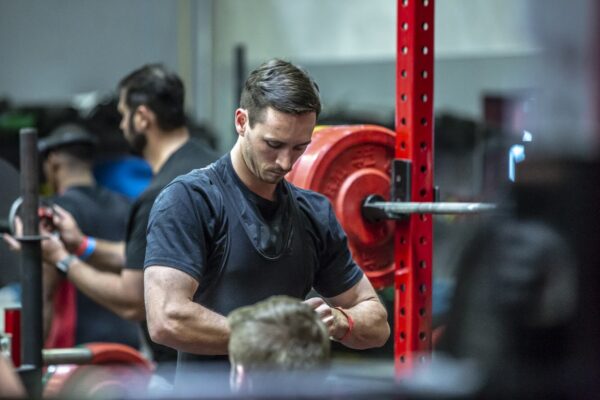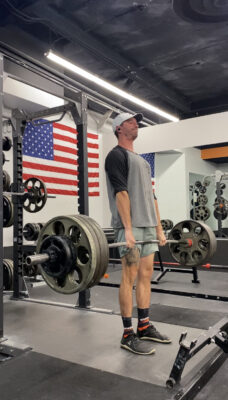Principles of Training for Hypertrophy, Strength and Power
In the realm of resistance training there are three primary domains to train in depending upon the goal of the individual/athlete. Each area of focus has a baseline set of training principles within specific rep ranges, volume metrics and intensity strategies. The basis of incorporating any of these three principles is to drive a new stimulus that aids/assists an advanced athlete to be better at their sport; or to improve training fluency for the novice lifters. With competitive athletes, these domains of training happen during specific times of the year depending on when their sport of play is in season. For the novice lifter, training sequentially in these domains makes for a simpler approach to quantify how and where you’re making progress in your training.

Hypertrophy
For the athlete going into their off season or a novice lifter that’s looking to improve their competence in each respectable domain, we will start with hypertrophy. In this context the term hypertrophy refers to the rebuilding of cells within a muscle that has been broken down (atrophy) via exercise. The intention with this phase is to induce a new level of metabolic stress to the muscle via repetition schemes, progressively increasing the intensity and limiting rest between sets of each exercise. Research suggests is that the sweet spot for optimizing muscle hypertrophy is: between 6-12 repetitions, 3-5 sets of each movement, and a rest period of 90 seconds or less (Schoenfeld, 2010). If you were to scale your perceived efforts of any given set 1-10 with 10 being the hardest (Rate of Perceived Exertion or RPE) training hypertrophy generally doesn’t exceed an 8 or 9 out of 10 on the effort scale. This is the foundational layer for resistance training to build off of when moving onto training for strength and power.

Strength
Research tells us strength training is a method of training that research tells us is dependent upon Motor Unit (MU) recruitment based off of demands placed on the body (Henneman, 1965). Put simply: the higher the demand/intensity of a movement – the more MU’s the body recruits and the larger they become. This is similar to hypertrophy with respect to training compound lifts, but the emphasis is on higher intensity (heavy weights), less volume (sets/reps) and longer rest periods. Research suggests that optimal training for strength lies within: 5 reps or less per set, 3-5 sets, with rest periods of up to 3 minutes (Schoenfeld, 2010). This seems paradoxical when first reading that it should be harder than training hypertrophy. However, while muscle soreness may not be as intense, the nervous system’s ability to tolerate high volume and high intensity (progressive overload) makes programming for strength more complex than for hypertrophy.

Power (Contrast Training)
Contrast training or CST is a modality of power training which incorporates complex movements such as plyometrics paired with strength training movements. For the sake of training power specifically, this program pairs fast movements (plyometrics) with slow movements (compound lifts) to elicit a new stimulus. An interesting comparative study conducted on professional Australian football players found that 8 weeks of CST training improved measures of absolute and relative squat jump peak power, vertical jump height and 1 RM half squat strength (Schneiker, 2023). This study proposes that the use of CST can have carry over into performance on the field as well as heightened competency with moving fast, powerfully and slow, but efficient, for strength.
The Principles of Hypertrophy, Strength & Power Program I have created is a comprehensive 12-week guide into of how you can effectively train these three domains of resistance training on your own. What you can expect to take away from this program is not only confidence in varying demands on your physical abilities without compromise, but also an untapped level of strength that will skyrocket your self-efficacy with taking on new physical challenges.
Citations
Muscle Hypertrophy
Schoenfeld, Brad J. The Mechanisms of Muscle Hypertrophy and Their Application to Resistance Training. Journal of Strength and Conditioning Research 24(10):p 2857-2872, October 2010.
Strength Training
Henneman E, Somjen G, Carpenter DO. Functional significance of cell size in spinal motoneurons. J Neurophysiol 28: 560–580, 1965.
Schoenfeld, Brad J. The Mechanisms of Muscle Hypertrophy and Their Application to Resistance Training. Journal of Strength and Conditioning Research 24(10):p 2857-2872, October 2010.
Power (CST Training)
Schneiker, Knut T.1; Fyfe, Jackson J.2; Teo, Shaun Y.M.3; Bishop, David J.4. Comparative Effects of Contrast Training and Progressive Resistance Training on Strength and Power-Related Measures in Subelite Australian Rules Football Players. Journal of Strength and Conditioning Research ():10.1519/JSC.0000000000004423, January 19, 202.


